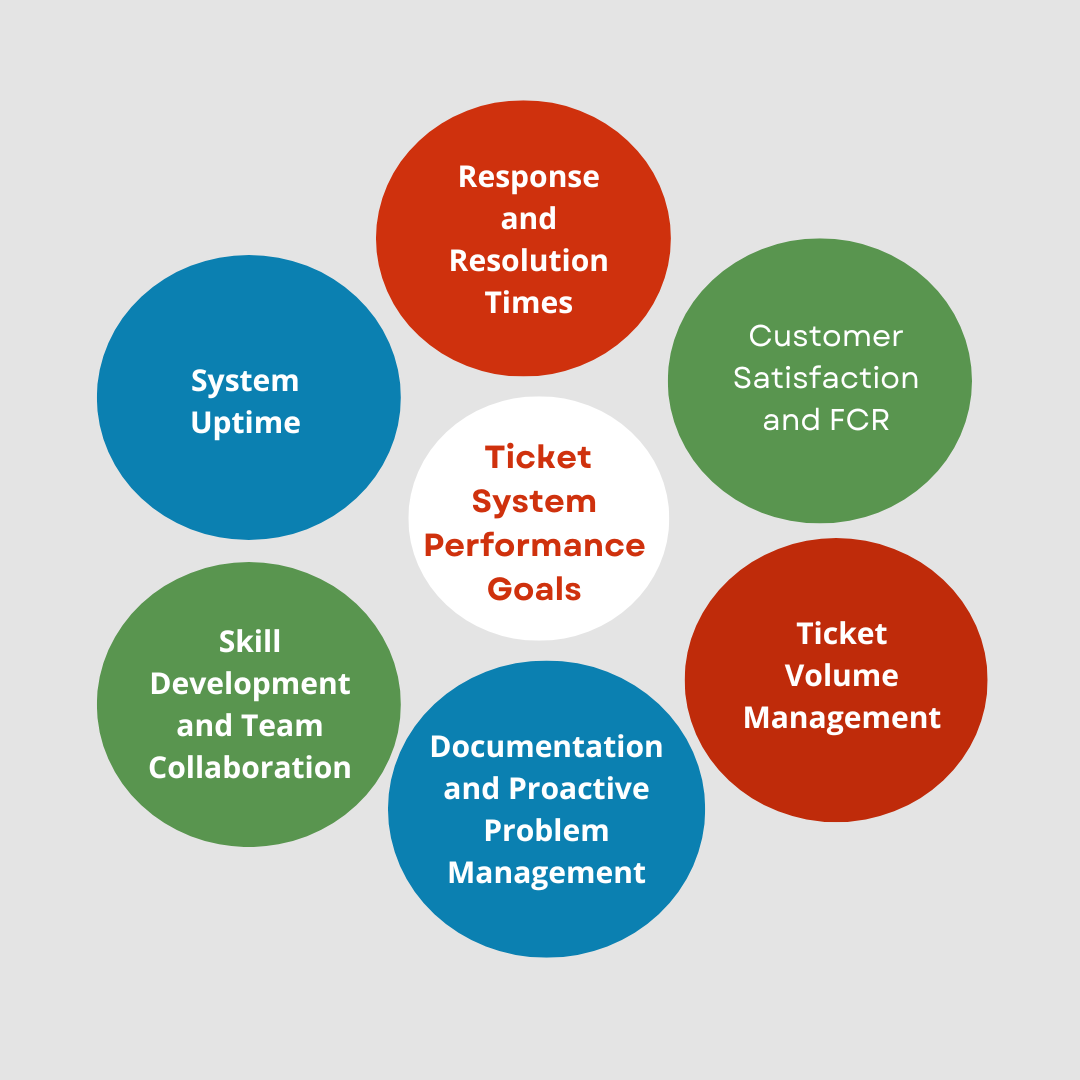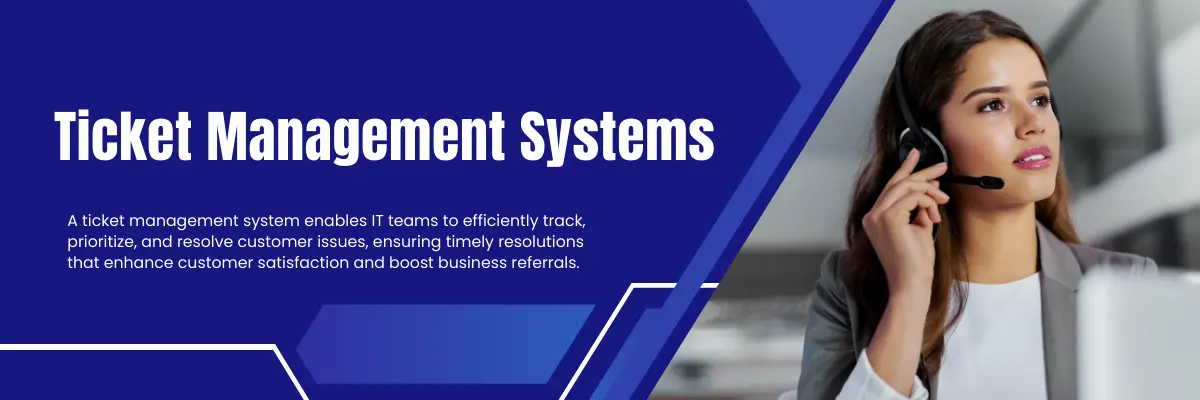The Ultimate Guide to Ticket Management Systems
In today’s customer-centric world, delivering exceptional support is more important than ever. Studies show that 86% of customers are willing to pay more for a great experience; whether it’s a small business or a large enterprise, the ability to manage customer inquiries, complaints, and requests efficiently can be a game-changer. Without a structured system, support teams can easily get overwhelmed, leading to missed tickets, delayed responses, and frustrated customers. This is where ticket management systems come into play. These systems help organize customer interactions, making sure every request is tracked, prioritized, and resolved quickly. This improves both customer satisfaction and business efficiency.
Background and Introduction
A ticket management system is a software tool designed to organize, prioritize, and track customer service requests, also known as support tickets. These systems are essential for maintaining order and efficiency in customer support operations, allowing teams to handle a large volume of requests without losing track of individual issues.
Modern ticketing systems offer automation features for ticket routing, SLA enforcement, and canned responses, improving efficiency. They also support multi-channel integration, allowing teams to manage tickets from email, chat, phone, and social media in one place. Collaboration tools, such as internal notes and escalations, help agents work together effectively.
The Need for Ticket Management Systems
Customer service can be overwhelming. With multiple channels—such as email, phone, chat, and social media—through which customers can reach out, managing these interactions manually is impractical. A ticket management system automates this process, ensuring that every customer interaction is logged, tracked, and resolved in a timely manner. This not only improves customer satisfaction but also boosts team productivity. It enhances customer interaction management and simplifies the entire support process.
Performance Objectives Of Customer Support and Ticket Systems
Response and Resolution Times: Automated workflows, prioritization, and real-time notifications help teams respond quickly and resolve issues within set timeframes, improving response time and resolution metrics.
Customer Satisfaction and FCR: By providing a comprehensive view of each customer interaction and integrating with knowledge bases, ticketing systems empower agents to resolve issues on the first contact, boosting CSAT and FCR rates.
Ticket Volume Management: These systems allow teams to manage large volumes of tickets efficiently, with features like auto-assignment, escalation rules, and customizable queues.

- Documentation and Proactive Problem Management: Every interaction and resolution step is logged, ensuring 100% documentation compliance. The data collected can also be analyzed to identify recurring issues, enabling proactive problem management.
Skill Development and Team Collaboration: Ticketing systems often include knowledge-sharing features, such as internal notes and documentation, that facilitate continuous learning and collaboration among team members.
System Uptime: By integrating with IT infrastructure monitoring tools, ticketing systems help identify and resolve issues quickly, contributing to higher system uptime.
Key Features of Ticket Management Systems
Ticket management systems come with a variety of features designed to streamline customer support:
- Centralized Ticketing: All customer interactions are logged into a single system, creating a centralized repository of customer issues.
- Automation: Automates ticket assignment, prioritization, and escalation processes based on predefined rules.
- Multi-Channel Support: Integrates various customer communication channels (email, phone, chat, social media) into one platform.
- Tracking and Reporting: Tracks the status of each ticket and provides detailed reports on metrics such as resolution time, customer satisfaction, and agent performance.
Common Proprietary and Open-Source Tools
Proprietary Tools:
- ServiceNow: Known for its IT service management (ITSM) capabilities, ServiceNow is widely used in large enterprises.
- Zendesk: A popular tool for its user-friendly interface and extensive customization options.
- Freshdesk: Offers multi-channel support and is suitable for businesses of all sizes.
- Salesforce: Integrates ticketing with CRM, providing a comprehensive view of customer interactions.
- Zoho Desk: Part of the Zoho ecosystem, making it easy to integrate with other business tools.
Open-Source Tools:
- OTRS: A flexible open-source ticketing system that is widely used in various industries.
- Tiger CRM: Combines CRM and ticket management, offering a unified approach to customer support.
Basic User Roles and Functionality
Ticket management systems support different user roles, each with specific functionalities:
- Agents: Handle incoming tickets, communicate with customers, and resolve issues.
- Supervisors: Monitor agent performance, handle escalations, and manage workflows.
- Administrators: Configure the system, set up workflows, and manage user roles and permissions.
- Customers: Access a self-service portal to submit tickets, track progress, and find solutions through the knowledge base.
Addressing SLA, TAT, and ITSM
Service Level Agreements (SLA): Ticket management systems track SLAs, ensuring that tickets are resolved within the agreed timeframes. SLA compliance is a critical metric for assessing the effectiveness of the support team.
Turnaround Time (TAT): By automating workflows and prioritizing tickets, these systems help reduce TAT, ensuring faster resolution of customer issues.
IT Service Management (ITSM): For IT departments, ticket management systems are a core component of ITSM. They help manage incidents, service requests, and changes, ensuring that IT services are delivered efficiently.
Advanced Features And Integrations
Knowledge Base (KB): A repository of articles, FAQs, and guides that customers can use for self-service. This reduces the number of tickets by empowering customers to find solutions on their own.
Telephony Integration: Incoming calls can trigger automatic ticket creation or bring up the customer’s profile, allowing agents to provide personalized service.
Chat and Social Media Integration: Customers can interact with support through chat or social media, and these interactions are automatically converted into tickets, ensuring that no customer query goes unanswered.
Learning and Training Opportunities
A ticket management system is more than just a tool for handling customer requests; it is also a valuable resource for learning and development. By analyzing past tickets, new team members can learn about common issues and how to resolve them. This historical data serves as a training ground, helping support staff develop the skills needed to excel in their roles.
The Rise of Omnichannel Solutions: Converging CRM and CIM
In the evolving landscape of customer service, businesses are increasingly adopting omnichannel solutions that integrate CRM (Customer Relationship Management) and CIM (Customer Interaction Management). This convergence allows for a seamless experience where all customer interactions, regardless of the channel, are unified within a single system. Stay tuned for related blogs on these aspects. This trend further emphasizes the importance of multi-channel support in improving customer experience.
Conclusion
Ticket management systems are indispensable for any organization that prioritizes customer satisfaction. With the advent of omnichannel solutions that converge CRM and CIM, these systems offer a unified, efficient, and seamless customer experience. By leveraging the advanced features and learning opportunities offered by these systems, businesses can enhance their support operations and build stronger customer relationships.


